The Xiangjiaba Dam is located on the Jinsha River’s lower reaches at Shuifu City, Yunnan Province, Xuzhou District, Yibin City, Sichuan Province.
It is only 1500 meters away from the Shuifu urban area and is the Jinsha River Hydropower Base’s last hydropower station. The Three Gorges Group built the hydropower station.
It is total cost about US $8.2 billion ( ¥54.2 billion yuan).
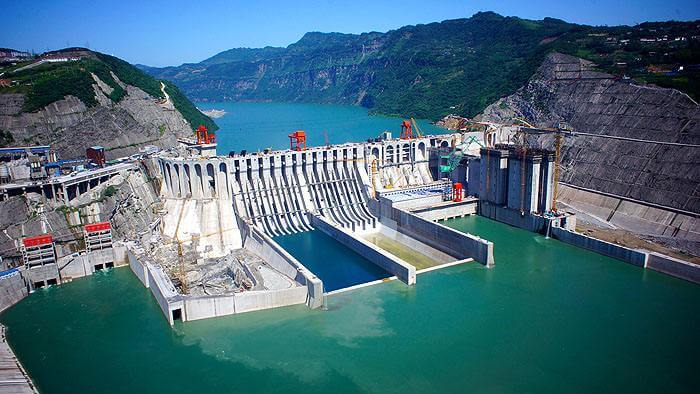
Building scale
The upstream Xiluodu Hydropower Station is 157 km away.
The river dam of the power station is a concrete gravity dam.
The crest’s height is 384 meters, the maximum height of the dam is 162 meters, and the length of the crest is 909.26 meters.
The dam site controls a watershed area of 458,800 square kilometers, accounting for 97% of the Jinsha River Basin area, with an average runoff of 3,810 cubic meters per second for many years.
The reservoir’s total storage capacity is 5.163 billion cubic meters, the storage capacity is adjusted to 900 million cubic meters, and the backwater length is 156.6 kilometers.
The power station’s installed capacity is 7.75 million kilowatts (eight 800-megawatt giant turbines and three large-scale turbines of 450,000 kilowatts), and the average annual power generation is 30.747 billion kilowatt-hours.
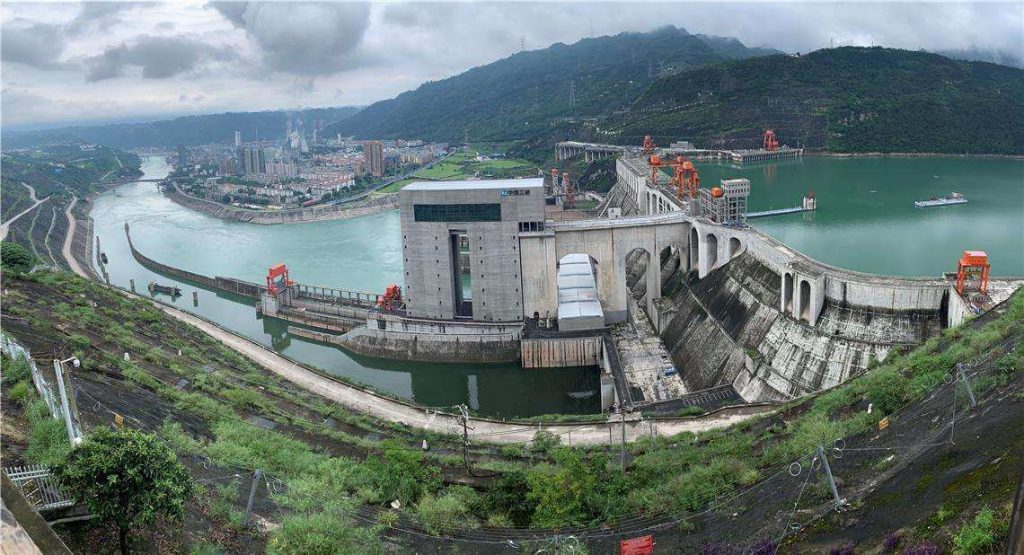
Multifunction
Xiangjiaba dam is the only super dam in the 25 hydropower stations of the Jinsha River Hydropower Base that also considers the irrigation function. The remaining 24 dams have no irrigation and water conservancy facilities.
Xiangjiaba is the only dam on the Jinsha River hydropower base to build ship lifts.
Its ship lift scale is comparable to the Three Gorges, which is the largest single-ship lift in the world, but the ship dam-turning efficiency is much higher than that of the Three Gorges fifth-class ship locks. It takes only 15 minutes for a 1,000-ton ship to pass the dam, which is more than the five-hour average dam crossing of the Three Gorges ship lock. Time is much faster.
The ± 800 kV DC UHV localization demonstration project from Xiangjiaba Hydropower Station to Shanghai is one of China’s most advanced and advanced power systems.
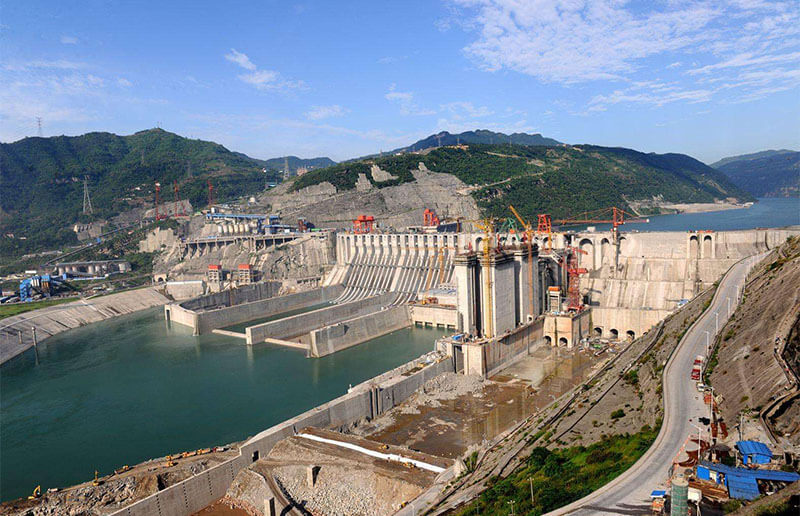
Main building
There are 7 parts on both sides of the non-overflow dam section, the left bank dam behind the plant, the left bank ship lift, the river overflow dam section, the right bank underground plant, and the two sides of the irrigation intake.
The reservoir is a gorge reservoir.
The normal water storage level is 380 meters (now the water level is about 270 meters). The dead water level (the water level without power generation during the water supply period) is 370 meters.
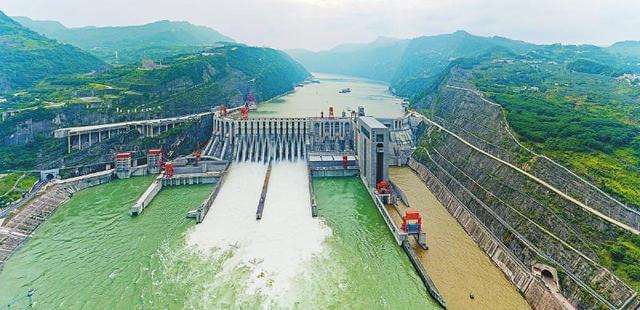
Project Progress
- December 28, 2008: Jinsha River closure.
- March 6, 2012: All 10 arc gates in the flood discharge center hole were hoisted.
- October 10, 2012: Xiangjiaba Hydropower Station was officially closed to store water, which marked that the first unit of Xiangjiaba Hydropower Station was about to usher in power generation.
- November 5, 2012: Xiangjiaba’s first unit (unit 7) was officially put into power generation operation.
- May 31, 2013: All 4 units (5, 6, 7, 8) on the right bank of Xiangjiaba were put into production.
- July 10, 2014: The final unit of Xiangjiaba Hydropower Station was officially put into operation on the 10th.
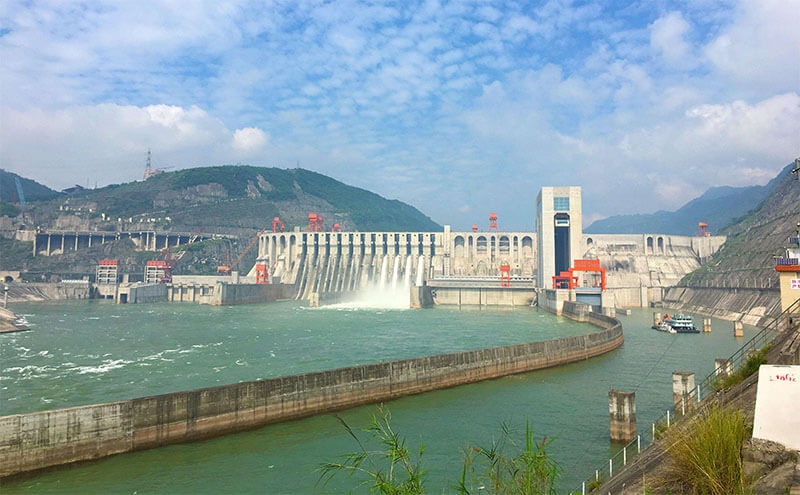
Building function
The Xiangjiaba Hydropower Station focuses on power generation. Also, it has comprehensive benefits such as improved navigation conditions, flood control, irrigation, sand retention, and counter-regulation of the Xiluodu Hydropower Station.
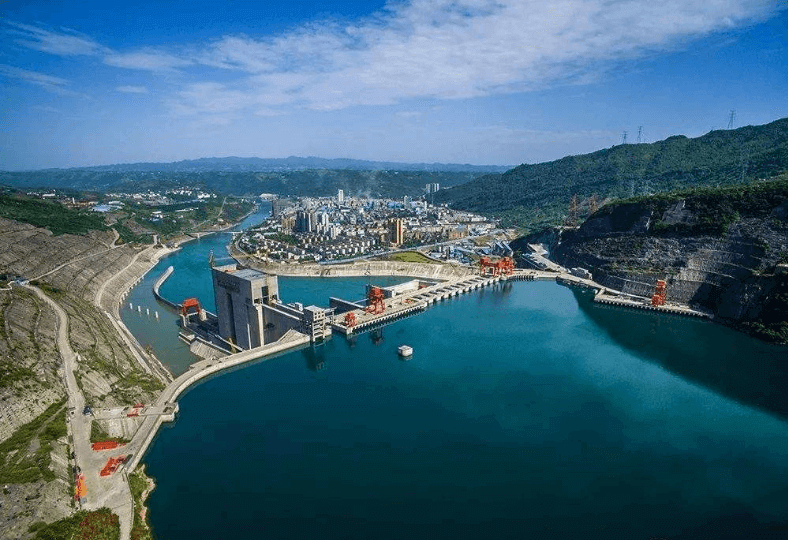
Power generation benefit
Power generation benefit
The upstream Jinping I Hydropower Station and Xiluodu Dam provide annual power generation of 2.009 million kilowatt-hours and 30.747 billion kilowatt-hours.
Hydropower projects in western China use DC UHV to deliver large amounts of power to central and eastern China. The ±800 kV DC UHV delivered to the Xiangjiaba Hydropower Station is a demonstration project in China.
Flood control benefits
The flood storage capacity of 903 million cubic meters is reserved for the Xiangjiaba Hydropower Station during the flood season. It has the characteristics of a large flood control ratio and proximity to flood control objects.
Joint construction of the Xiangjiaba Hydropower Station and the Xiluodu Hydropower Station is one of the main engineering measures to solve the flood control problem of the Yangtze River. In conjunction with other measures, the flood control capacity of cities such as Yibin, Luzhou, and Chongqing can gradually reach the national standards.
At the same time, cooperate with the Three Gorges Reservoir to further improve the flood control capacity of the Jingjiang reach and reduce the loss of flood diversion in the middle and lower reaches of the Yangtze River.
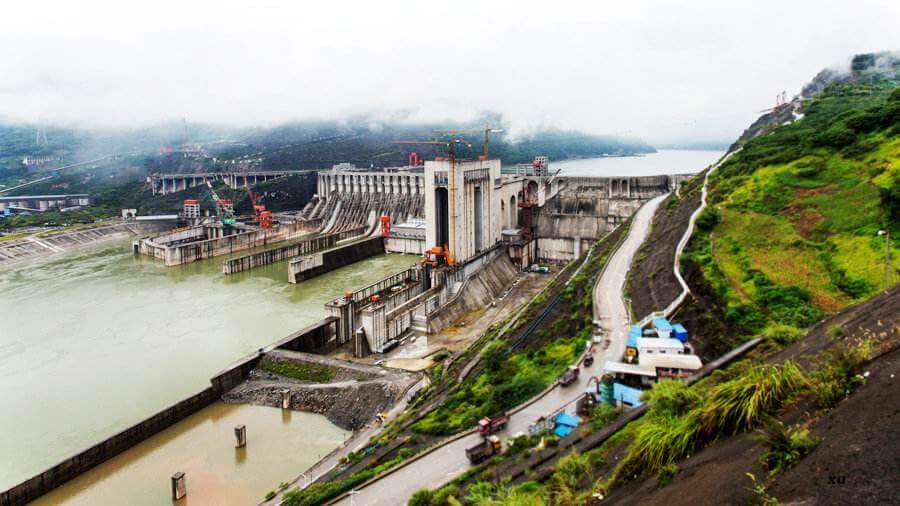
Shipping benefit
The Jinsha River is a mountain-type river. Due to the narrow river channel and rapid beaches, the shipping industry’s development has caused greater difficulties.
The Jinsha River’s operational navigable section is only a 105-km channel from Yibin to Xinshi Town, a fifth-level channel.
The Xiangjiaba navigable building is designed according to the four-level channel’s standard, which will inundate 84 places that need to be rehabilitated. The reservoir area will become a deep-water navigation area for safe sailing. The shipping conditions can be fundamentally improved.
Simultaneously, a joint operation with Xiluodu Reservoir can improve the shipping conditions in the downstream dry season.
Irrigation benefits
The banks of the Yangtze River on the lower reaches of Xiangjiaba Dam are hilly agricultural areas.
This area has fertile land and a suitable climate. But lacks large-scale backbone water conservancy facilities, high fields and low water, and frequent droughts. The water source has become one of the restrictive factors for agricultural development in this area.
After the Xiangjiaba Reservoir is completed, it can divert water to irrigate about 3.7 million acres of farmland in 14 counties and cities downstream. It can solve the industrial and domestic water use problems in some cities and towns along the irrigation canal.
Environmental benefits
The average annual power generation of the power station is more than 30 billion kWh.
It can replace coal-fired thermal power plants of the same scale, equivalent to reducing raw coal consumption by about 14 million tons per year, reducing carbon dioxide emissions by about 25 million tons per year, and nitrogen dioxide by about 170,000 tons, and sulfur dioxide by about 300,000 tons.
Not only can it save coal resources, but it can also reduce coal-fired pollution and improve the environmental quality of the Sichuan Basin.
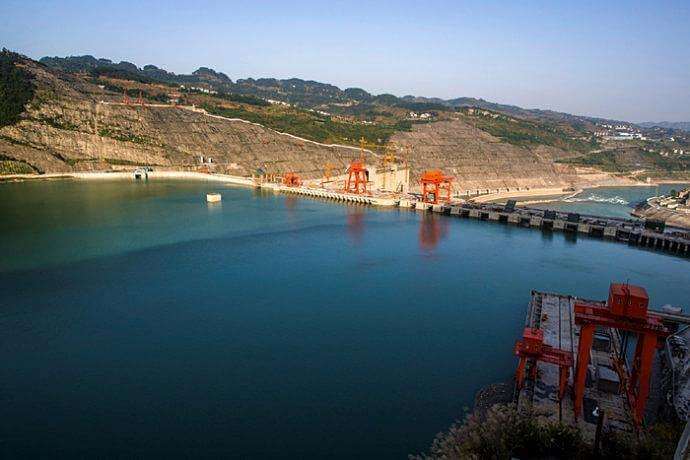
Xiangjiaba Dam Data
- Country
- China
- Location
- Shuifu City, Yunnan Province, China
- Official name
- 向家坝水电站
- Owner(s)
- Chinese government
- Operator(s)
- China Yangtze Power
- Purpose
- Power, flood control, silt control, Irrigation
- Cost
- US $8.2 billion ( ¥54.2 billion )
- Status
- In use
- Type of dam
- Gravity dam
- Began
- Nov-26, 2006
- Opening date
- Nov-05, 2012
- Height
- 162 metres (531 ft)
- Length
- 909 metres (2,982 ft)
- Installed capacity
- 7,750 MW
- Turbines
- 4 × 812 MW, 4 × 800 MW,3 × 450 MW
- River
- Jinsha River
- Reservoi name
- Xiangjiaba Reservoir
- Total capacity
- 5,163,000,000 m³ (4,185,712 acre ft)
- Catchment area
- 458,800 km² (177,144 sq mi)
- Reservoir area
- 95.6 km² (37 sq mi)
View Xiangjiaba Dam on Google Satellite Map
Google satellite maps allow you to see building details more clearly, including natural landscapes such as mountains, rivers, deserts, sea and man-made engineering buildings.
If you are very interested in this engineering building, it is a good idea to click below Google Map icon. We will help you jump to the corresponding location of this building or engineering on Google satellite map.
View Xiangjiaba Dam on 720yun
720yun is a panoramic image service provider, where you can see the panoramic image of the Engineering Building, let you know more about the Engineering Building.






























































